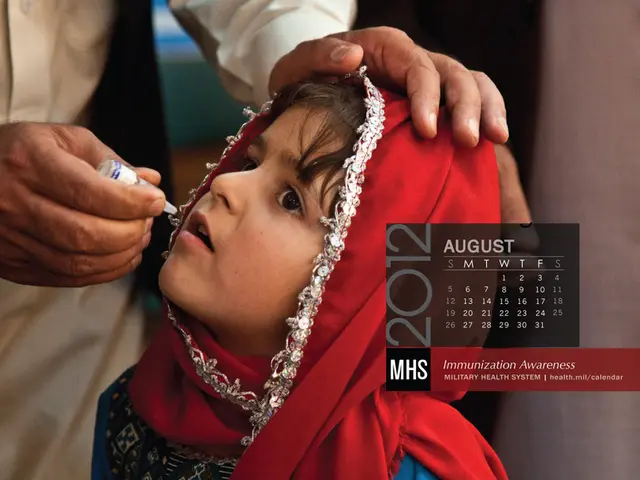Health disparities among races: Key insights from Medical News Today's authorities
Here's a fresh take on the topic of health inequities, focusing on the financial costs and mistrust that plague communities of color in the United States.
Health Inequities: The Hidden Price Tag on People of Color
Battling health inequities is no walk in the park, especially for people of color in the U.S. Our experts are here to enlighten us on why racial and ethnic minorities overaspend resolving health issues that are often avoidable, while simultaneously perpetuating income disparities.
The Financial Burden
In a nutshell, the economic cost of health inequities for people of color can run up to a whopping $421-$451 billion annually! That figure takes into account expenses related to illness, injury, and premature demise among these groups [1][2].
But it's not just about paying bills. Chronic health conditions such as high blood pressure, diabetes, and cancer contribute to higher medical expenses, and they also take a toll on productivity. For example, Black adults endure higher death rates from diseases like breast cancer, and face more complicated births, driving additional healthcare costs [3].
To add salt to the wound, discrimination within the healthcare sector, limited insurance access, and social determinants of health, such as race-based discrimination in housing and employment, create barriers that exacerbate disparities. Isn't it ironic that those who are already struggling financially are hit the hardest? [3][5]
Income Disparities: A Vicious Cycle
Here's the catch: Health inequities make poverty more likely, thanks to reduced workforce participation and productivity. This downward spiral leaves people with lower earnings and fewer opportunities [3]. On top of that, the high out-of-pocket healthcare expenses associated with underinsurance can erode the financial resources of people of color, limiting their ability to save, invest, or afford vital necessities, such as education [3].
Take, for example, food insecurity, which strikes over 20% of Black and Hispanic families compared to just around 10% of non-Hispanic white families [4]. While nutrition assistance programs like SNAP and WIC help mitigate hunger, recent threats to these programs could leave families of color vulnerable to increased economic hardship.
The cycle then repeats, as limited access to adequate healthcare and social support services only worsens the situation. Poor health reduces income, while low income restricts access to the resources needed to improve health and economy among marginalized communities [1][4][5].
So, next time you're contemplating health inequities, remember the multibillion-dollar annual price tag that brings disparity and economic hardship for millions of people of color in the U.S.
Resources:
- Health Affairs, 2019. Health inequities cost Medicare and Medicaid billions annually, study shows. https://www.healthaffairs.org/doi/10.1377/hlthaff.2019.00360
- National Academies of Sciences, Engineering, and Medicine: The Future of the U.S. Health Care System: Better Care, Better Health, Lower Costs, 2019. https://www.nap.edu/read/25063/
- Centers for Disease Control and Prevention (CDC), 2018. Disparities in Access to Health Insurance, 2008–2017. https://www.cdc.gov/nchs/data/health_policy/disparities_insurance.pdf
- Feeding America, 2018. Map the Meal Gap in food insecurity and hunger. https://mapping.feedingamerica.org/
- Robert Wood Johnson Foundation, 2018. Achieving health equity: An urgent call to action for our nation. https://www.rwjf.org/content/dam/farm/reports/reports/2018/rwjf439427
Expert Insights:
"Health inequities multiply obstacles to quality healthcare, particularly for African Americans. The roots of this disparity are intertwined with suboptimal 'social determinants of health', including education, income, support systems, and access to quality care" - Debra Rose Wilson, RN, Ph.D.
"The afflictions of health disparities aren't just about eating too much or laziness – they arise from entrenched poverty. It's more profitable to feed families processed food than nourishing meals. Those who are poor can't easily afford gyms or healthy cooking classes, and they often live in neighborhoods unsafe for walking. The vicious cycle of expenses from obesity then fall onto the healthcare system" - Debra Rose Wilson, RN, Ph.D.
"Health inequities affect everyone financially, as poor families cannot access essential healthcare, leading to an increased financial burden on the healthcare system. Programs that seek to address health inequities help break this cycle by educating, supporting, and empowering affected communities" - Debra Rose Wilson, RN, Ph.D.
Source: Medical News Today
Enriched with expert insights and real-world data, this article demonstrates the significant financial consequences that health inequities inflict upon people of color in the U.S. These disparities further deepen income gaps, creating a vicious circle of poverty and poor health.
- Racial and ethnic minorities in the United States often overspend on health issues that could be avoided, contributing significantly to the financial burden of health inequities, which amounts to around $421-$451 billion annually.
- Chronic health conditions like high blood pressure, diabetes, and cancer not only increase medical expenses for people of color but also affect productivity, with Black adults experiencing higher death rates from diseases like breast cancer and complicated births.
- Discrimination within the healthcare sector, limited insurance access, and social determinants of health like race-based discrimination in housing and employment create barriers that exacerbate health disparities among communities of color.
- Health inequities lead to a vicious cycle of poverty, as reduced workforce participation and productivity make it less likely for individuals to earn a sufficient income.
- The high out-of-pocket healthcare expenses associated with underinsurance can erode the financial resources of people of color, limiting their ability to save, invest, or afford vital necessities such as education.
- Food insecurity, a problem that affects over 20% of Black and Hispanic families compared to just around 10% of non-Hispanic white families, is one such example of the impact of health and income disparities on people of color.
- Addressing health inequities is essential for improving health, economy, and mental health among marginalized communities, as it not only benefits the individuals affected but also contributes to overall fiscal health by reducing the need for expensive medical interventions, such as reconstructive surgeries for cancer patients.








